Cancers are made from a person's own cells going rogue. If a cell acquires the right combination of mutations or changes in its genetic code, it can divide uncontrollably and lead to the formation of a tumour. As these cells contain a unique individual's DNA, if they were to end up in another person's body, they should sound the immune alarm, be recognised as foreign and destroyed - much like an Incompatible organ transplant. Some viruses, like the human papilloma virus or HPV, can also cause cancer by triggering changes in a cells genetic code and promoting tumour formation. In these cases, the virus is infectious rather than the cancer itself. But their are very rare instances where the cancer cells themselves pass from one individual to another, spreading the disease in a contagious manner. This week, we explore the incidences of these communicable cancers in Tazmanian devils, dogs and bivalves - and learn about the rare instances these have happened in humans - to better understand the complex relationship betweeen cancer and the immune system.
In this episode
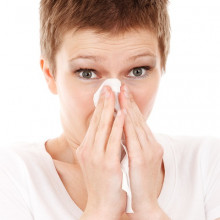
01:21 - Nine newly recognised COVID-19 symptoms
Nine newly recognised COVID-19 symptoms
Tim Spector, King's College London
UK Covid cases have reached a new high watermark in recent days with surveys suggesting that millions of infections have occurred over the last week. This coincides with the cessation of free testing and the publication of a new list of symptoms that might earmark a case of coronavirus. There are now nine things on that list. So why this switch, and why now? Tim Spector, at King’s College London, has led the ZOE initiative that’s logged Covid symptoms throughout the pandemic. Chris Smith caught up with him and started by asking, what is the most likely giveaway of a covid infection in 2022...
Tim - Based on your symptoms at the moment, most with COVID are presenting cold-like symptoms, number one being sneezing, runny nose, headaches, fatigue, and sore throat. After that, you may have some of these other symptoms which often appear a bit later, which might be a cough, fever and some distortion of your taste, although unlikely to be loss of smell. Plus, a whole range of other muscular aches and pains et cetera. So, at the moment, with COVID levels approaching about one in 14 people, it's more likely if you have cold-like symptoms that you have COVID than a cold.
Chris - That's quite a turnaround from the Holy Trinity that we've been using to diagnose this from the get go, which was the fever, the cough and the loss of sense of smell and taste. Why the switch all of a sudden?
Tim - Well, we've been lobbying the government probably for 18 months now to change the list and they have steadfastly refused although this evidence has been building up over 18 months and most other countries in the world have changed over a year ago. My belief is that the government did this to stop complaints that they couldn't meet demand with their free testing. That's why, on the 1st of April, when they abolished free testing, they came out with this new expanded list of symptoms in line with virtually every other country in the world.
Chris - What sort of impact is this going to have then?
Tim - It depends how widely it's used and promoted by the government. I think the key here is about employers and I think that's where it is going to have an effect, which coincides with the government stopping payments for sick pay for COVID and has led to this rather muddled guidance.
Chris - I found this as an infection control doctor, I found this somewhat confusing, where the message appears to be, 'if you can get out of bed and get out the door, you can go to work.' Does it not say the same thing to you?
Tim - It does. The only exception is if you've got a proven fever, which is what I remember as a kid at school, desperately hoping I had a fever so I didn't have to go to school. It's completely contradictory to say there is this list of symptoms, but then the guidance for going to work essentially says, 'if you've got a runny nose, a sore throat, and you are sneezing all over the place, if you feel well enough to go to work, go there and sneeze all over your colleagues or sneeze on the tube.' And nowhere does it say, 'do as much as possible to mitigate spreading it to a hundred people.'
Chris - Do you think in the grand scheme of things it is actually going to make much of a difference, though. If we assume that COVID has turned into a much more mild illness, because talking to some of the infection control nurses at the hospital I work at, they were saying that they've got people routinely in their nineties who are being picked up by screening, completely asymptomatic. What a turnaround from two years ago. They are saying, actually, we are in danger paralysing systems because we are trying to control the uncontrollable and perhaps the approach of accepting that now we have done our best to minimise the threats and the threats are low. Now it is time to regard this more as a cold rather than COVID?
Tim - I can see that point of reasoning, but a colleague of mine did some modelling. It showed that if you reduced the self isolation from five days to two days, this would have a huge knock-on effect on the numbers of infections and the number of hospitalisations in the next six months. So, what sounds like a fairly trivial difference in guidance can have a very big difference. We're currently at 2000 admissions a day, although all those are not directly due to COVID, there's still a big burden, and that would push it much higher and would actually cause extra deaths. I think you've got to look at the whole picture. I think it is unwise to just say, 'we're not going to bother at all', and let people who are highly infected, just by keeping them at home for a few days, you could really reduce the number of infections in that workplace or hospitalisations. I think we have to find some halfway house between 'there's no point in bothering' and further tough restrictions.
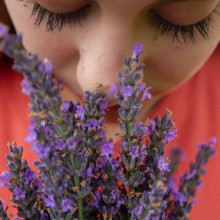
06:20 - Shape of odour molecules determines smell
Shape of odour molecules determines smell
Asifa Majid, University of Oxford
Our preference for smell feels personal. We have our favourite colognes, soaps, and food scents. But do we like certain smells because everyone around us likes them and so that’s the way we’ve grown up. The answer’s no! It’s apparently not a cultural thing; people the world over like - and loathe - the same sorts of smells, as Julia Ravey heard from Asifa Majid from the University of Oxford…
Asifa - Smell studies like most psychology studies, or medical studies more broadly, typically focus on Western participants, usually living in big cities, usually near universities, usually in the middle classes. When we're making theories about how things work, we hope to be making claims about the whole of the human population. So, you really want to be testing people from diverse backgrounds, especially if we want to try and untangle whether it's culture that, for example, causes our preferences for smells, or just individual preferences, or biology.
Julia - Which communities did you study?
Asifa - We tried to get people with very different lifestyles. So, we tested different hunter gatherer communities. And then we had some small scale farmers in Ecuador, for example, and then people that live in big cities in Mexico and Thailand. So, we're trying to take people with very different sorts of experiences.
Julia - When ranking these different smells, what came out on top and what was the least liked smell?
Asifa - In our study, people across the world all really liked the smell of vanilla and they least liked the smell of isovaleric acid, which smells a little bit like sweaty feet. It didn't matter what culture people were in or what kind of environment they lived in, everybody generally preferred vanilla and they all thought that the isovaleric, sweaty feet smell was really bad.
Julia - How much influence did culture actually have in these preferences?
Asifa - A really small amount. Only 6% of the data could be explained by culture. Most of it seemed to be shared, and then there were some individual differences too, but culture plays a very small role.
Julia - How much of the proportion of what people preferred in terms of smell came down to the molecular structure of the odour molecule?
Asifa - Anything that we smell is basically a molecule, and any molecule has thousands of different features. We can look at those features and see if we can predict how pleasant something is, and, when we do that, it turns out we can predict, just from the molecule itself, which ones people are going find nice and which ones they're going to find stinky.
Julia - If we're genetically built to prefer certain smells over others, why do you think that is?
Asifa- Some smells are probably telling us that something's dangerous, so our sense of smell is very sensitive to things that could be going wrong. We can smell, for example, a gas leak before we can see anything going wrong, we can smell fire from a distance, or the fact that the milk is going off. Our noses are very sensitive to signals of danger and it's likely that what we're finding is the same sensitivity to things that could be potentially toxic for us. I think COVID has taught us that the sense of smell is really important. One of the symptoms that we know that COVID has is a loss of the sense of smell, but luckily the sense of smell is really malleable and flexible, so people do have their sense of smell returning.
Julia - Yeah, I think we take our sense of smell for granted. When I had COVID and lost mine, it was so acute. You don't realise how much pleasure and joy smell brings into your life until it's taken away from you.
Asifa - Absolutely, yeah. So everybody should go out there and sniff something and enjoy it.
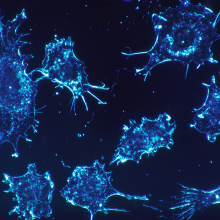
10:59 - Bacteria boost the spread of cancer
Bacteria boost the spread of cancer
Eric Rahrmann, Cancer Research UK
Now, are bacteria aiding and abetting the spread of cancer? That’s the conclusion of a new study this week from scientists at Westlake University in China, where they have found that tumours pick up bacteria from the bloodstream and take them inside their cells where they somehow boost the strength of the cancer cells so they can better withstand travelling through the bloodstream to create secondary tumours elsewhere in the body. Eric Rahrmann is a cancer biologist at Cancer Research UK; he wasn’t involved in the new study but works in this same general area. Chris asked him to take a look at the results…
Eric - A couple years ago, some major papers came out demonstrating that in human tumours we see bacteria actually within the cells and that they're having some sort of contribution to tumour development. What this particular group out of Wakefield has demonstrated is that not only are bacteria cells present, they help to support the dissemination or trafficking of cells from the primary tumour throughout the body in the process that we call metastasis.
Chris - How do they do it? How did they show that (A) the microbes are there and (B) that they're making an active contribution to making the cancer spread?
Eric - They used some really cool mouse models of memory tumour development, and coupled that with some microscopy. Through genetic labelling of bacterial strains, basically a fluorescent protein or colour so you can follow where the bacteria strains go within the tumour, they can see these green labelled bacterial strains within the primary tumour cells. And they can see that these green bacteria are retained within the primary tumour cells when they leave their site, traffic in the peripheral blood, and then seed at a distant organ. What this group has been able to uncover is that different strains of bacteria have different profound impacts on the ability of cells to travel or spread throughout the body.
Chris - And what, if you remove those bacteria, the tumour spreads less well or is less likely to take up residence at a distant site in the body.
Eric - Yes, that's right. Through a number of different combinations of antibiotic treatments, they were able to selectively kill the bacteria within the tumour cells themselves. When they did this, they identified that certain strains that were obliterated reduced the ability of the cancer cells to seed and create metastases.
Chris - Where do these microbes come from in the first place? How do they get into the cancer to start with?
Eric - Our bodies are composed of large, diverse microbiome phyla. Most well-characterized within the colorectal intestinal tissues. Through many years of research, we've see that many of our other organs also have this relationship with bacterial strains within our body that are normally there. So, these are normal residents. I think a big question out there is, 'How do the bacteria that are in the surrounding environment actually get into the cell itself? There's a number of bits of research to understanding this, but I think we're really just getting at the surface of this process, of this, in a way, I guess, symbiotic relationship of the bacteria going intracellularly to the cancer cells, promoting their survival.
Chris - And what do those microbes do so that when the cancer cells do break away from the primary tumor, where the disease begins, and start to travel around the body, they are more likely to spread somewhere else. What's the role of the microbes in that happening?
Eric - This is where this particular study, I thought, really sparked my interest, here. What they're able to demonstrate is that when the microbiome occur intracellularly, that makes them more healthy. One example that they looked at is sheer stress. Imagine fluid is flowing through our peripheral veins and arteries, and that's really harsh conditions on cells and there's some membranes. So, if you're not in the right structure or formation, you will die. They've demonstrated that the microbiome helps to reprogram the cell to survive these conditions.
Chris - How do we use this knowledge?
Eric - What I think is really beneficial from this study that's coming out is that we need to start looking at how we treat metastatic cancer differently than we are currently. We should start considering how to target these different strains. And it's not just what's happening at the cellular genetic level, but other contributing factors as well.
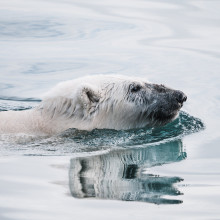
16:19 - IPCC report demands climate action now
IPCC report demands climate action now
Jo House, University of Bristol
On April 4th, the Intergovernmental Panel on Climate Change, or IPCC, published the third part of its comprehensive review of climate science. Inside, it argues that stabilising the climate will require fast action and emissions must peak by 2025 for the world to have a chance of meeting the goals agreed in Paris. Here to tell us more is environmental scientist Jo House, from the University of Bristol...
Jo - This report looks specifically at climate action, what we can do and in fact what needs to happen in order for us to limit the worst of climate change. It finds that we really need to much more rapidly look at bringing down greenhouse gas emissions. They need to peak by 2025 and to be reduced by about half by 2030 if we are going to keep warming to less than 1.5 degrees and definitely within 2 degrees.
Chris - This sounds like we are running over the same old ground again, though.
Jo - As someone who has been a climate scientist for 30 years, we've been saying this for a long time, but what we are seeing now with this series of reports that have come out is that the science is really clear. Climate change is anthropogenic. The report that came out about a month ago was about the severe impacts that are already being experienced throughout the world, and that will only get worse. This one is making it clear that the window is now very limited to be able to take the action we need to limit to 1.5 or 2 degrees.
Chris - Is it going to basically take the crisis happening for people to take note? We just seem to have been receiving these warnings year after year that this is going to happen, and it's a bit like speed cameras on the motorway, people disregard the speed limit until they get a ticket. At what point are we going to give the world a ticket and finally something's going to change because we seem to pretty much be going business as usual? I haven't noticed my lifestyle change.
Jo - It is really, incredibly frustrating, but there are some things in the report that give me hope, which is there's about 18 countries in the world that have actually already peaked their emissions and have managed to keep reducing year on year. It hasn't cost them a lot in terms of GDP; they have been able to do it in an affordable way.
Chris - It is easier for some countries to do this. If you live in a country where the sun shines 24/7 - I'm being facetious of course - but take California: every day, it's a sunny day. Putting solar panels over enormous amounts of space you have at your disposal means you have enormous opportunities to produce a lot of guaranteed energy. If you live in the UK, the sun doesn't shine half the time, the wind doesn't blow half the time. It's a very different problem that you are grappling with, isn't it?
Jo - Well, actually, in the UK, we have managed to reduce our emissions a lot by switching from burning coal to burning gas. That's been a big move for us. And there's plenty of countries that have a lot of wind energy, as well as solar, and the cost of the renewable technologies has dropped massively - solar energy costs have dropped by 85%. And now, we are getting more technology with batteries moving forward, so we can store some of that renewable energy. Surprisingly, it's actually sometimes some of the poorer countries that are actually doing the most because they are feeling the impact and they know how important this is.
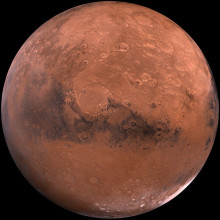
19:54 - Sound on Mars travels at 2 different speeds
Sound on Mars travels at 2 different speeds
Matt Bothwell, University of Cambridge
Just over a year ago, NASA’s Perseverance rover touched down on Mars. It’s equipped with some of the most powerful analytical equipment you can send into space and its mission is to look for evidence of life, past and possibly present. But it’s also got some older tech aboard, including a microphone, and periodically scientists have been eavesdropping on what Mars sounds like… which resulted in the rather strange discovery that, on Mars, sound travels at two different speeds, as Harry Lewis and public astronomer Matt Bothwell have been discussing…
Harry - So, we have a piece of sound that's come out from Perseverance, Matt, have you heard it before or shall I play it?
Matt - Why don't you give it a play?
Harry - Let's give it a play. (Audio clip) -It sounds like someone standing outside in a field on a rather windy day with not much else going on. It's very low frequencies that we are hearing there, isn't it?
Matt - That's right. Well, it sounds like someone's standing in a field recording in the wind because, in a way, that's what it is. It's wind on a different planet, but, at the end of the day, we're picking up a wind. You're right that we're hearing very low frequencies and that's one of the interesting things about audio on Mars: the Martian atmosphere is much thinner and made of different substances to the earth's atmosphere, and so sound will behave differently. Sound is a wave that travels through some kind of medium like air or water, and depending on what that medium, that can change the way the sound works. Think about when you inhale a helium balloon and then your voice goes all squeaky, that happens because the speed of sound in helium is much faster than the speed of sound in normal air.
Harry - I suppose that's the same with something like water, right? There's a speed difference between water and air.
Matt - Exactly, yeah. In physics, the speed of a wave is the frequency of the wave times the wavelength and the wavelength has to stay the same because that's set by the size of your vocal cords. So, if the speed increases, then the frequency has to go up as well, and so your voice sounds squeaky when you inhale helium. The opposite thing is true for Mars' atmosphere. It's a very thin carbon dioxide atmosphere and the sound is going to be very, very low. So, you get the opposite effect. The speed of sound is lower on Mars, and so you lose those high frequencies and everything sounds very low and booming. The surprising thing is that there's actually not one single speed of sound on Mars, it's actually two different speeds. To put it another way, the speed of sound on Mars varies depending on how high pitched the note is.
Matt - The reason is really interesting, actually. If you think about what sound actually is, it's a wave that carries energy through the air. If you imagine a wave washing through the air, you kind of imagine all the little air molecules bouncing into each other. That model works here on earth, but the Martian atmosphere is mostly carbon dioxide - these very little, rigid, springy molecules. As a wave travels through the Martian atmosphere, some of the energy of that wave goes into vibrating the little carbon dioxide molecules. Depending on the frequency of the wave, it's either going to travel as sound does on earth or it's going to lose some energy and so you get this double speed of sound effect.
Harry - The other thing that I noticed about this audio is that it's just wind. It's just the weather. There's nothing else really going on. It's quite a quiet place really, isn't it?
Matt - That's right. I think that, again, that's because Mars' atmosphere is so thin, it's actually pretty bad at transmitting sound. The rule is the denser your medium is the better it's going to transmit sounds. If you go in the opposite direction and think about water, much denser than air, and whales can communicate over thousands of miles in the oceans because they're talking through this dense medium, in Mars' thin atmosphere, you have the opposite problem. It would be very hard to have a conversation standing 10 meters apart because your voices would just get attenuated. Any distant sounds on Mars, like rocks moving around or whatever, just disappears into the thin air.
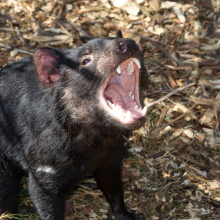
25:08 - Transmissible tumours in Tasmanian devils
Transmissible tumours in Tasmanian devils
Hannah Siddle, University of Southampton & Healesville Sanctuary at Zoos Victoria
One animal that's experiencing a rare cancer outbreak are Australia's Tasmanian devils. This disease, which only appeared for the first time in recent decades, has pushed the species to the brink of extinction. Threatened species keeper Ben from the Healesville sanctuary at Zoos Victoria in Australia explains how they're helping to save the Tasmanian devil to Julia Ravey, and Hannah Siddle from the University of Southampton talks through what has led to the devils decline in numbers…
Chris - Cancers are made from a person's own cells going rogue. If a cell acquires the right combinations of mutations or changes in its genetic code, it can divide uncontrollably and lead to the formation of a tumour. As these cells contain a unique individual's DNA, if they end up in another individual's body, it should sound the immune alarm, just like an Incompatible organ transplant. They should be recognised as foreign and destroyed. Now some viruses, which are of course also infectious, like the human papilloma virus or HPV, can also cause cancer. But this is because they can trigger changes in a cells genetic code that leads to tumour formation. And in these sorts of cases, the virus is infectious rather than the cancer itself. In the very rare instances of contagious cancers, though, it's the cancer cells themselves that are passing from one individual to another. And that's exactly what we're gonna be exploring this week. To emphasise, these cancers haven't been observed naturally yet in humans, but they have been spotted in other animals and one animal that's experiencing a rare cancer outbreak are Australia's Tasmanian devils. This disease, which only appeared for the first time in recent decades, has pushed the species to the brink of extinction. Threatened species keeper Ben from the Healesville sanctuary at Zoos Victoria in Australia explains how they're helping to save the Tasmanian devil to Julia Ravey during, well, feeding time at the zoo...
Ben - So today we're going to feed some of our Tazzy devils. All our food is labeled with little tags so we know whose food is whos because everyone has different weights. So again, we're doing a scatter feed here -we throw foods throughout their habitat. We spread it around so that they have to go forage for it. Some of the devils over here are pretty shy. Tasmanian devils don't really, truly follow their name and they're actually very timid by nature. Tazzy devils are threatened species. So with some of our breeding females that we're hoping to breed this season, we've got camera footage monitoring them feeding. So we just make sure that's turned on every night. And we check that every day just to see if the females have eaten overnight. The main reason we need to check this is because if they're going through oestrus, they don't eat their food as often, or as frequently as normal. And that way we can tell that they are going through their oestrus, and we can start to prepare for breeding.
Julia - Sanctuaries like the Healesville sanctuary supported by Zoos Victoria in Australia are playing a vital role in helping the Tasmanian devil avoid extinction through their breeding programs. These animals are also being released into the wild on islands and mainland Australia to up their numbers. This is because their numbered sightings have dropped by 80% in the last two decades and as Ben said, they are officially an endangered species. Hannah Siddle, an assistant professor in molecular immunology from the University of Southampton, explains what has caused this drastic decline...
Hannah - The majority of the decline has been caused by what we call DFT1 which is devil facial tumour disease. And that is the tumor that emerged sometime just before 1995. We do now have a second contagious cancer in the Tasmanian devil population termed DFT2. And it is now responsible for some declines, but in a very limited geographic area where it's still located.
Julia - And you say this is a contagious cancer. So how does it spread from one animal to another?
Hannah - It's a little bit like for us a virus or bacteria, because it can pass when the devils contact each other. Rather than being a virally induced tumour, this is actually the cancer cells themselves that are able to pass between individuals. And we think in the case of the Tasmanian devils, that this is primarily occurring when they bite each other, which unfortunately they do tend to do when they're fighting and in the mating season as well. Our best evidence at the moment is that these cells are actually grafting into the next devil when this biting behaviour occurs. And once these tumour cells then seed into the next individual, they grow and establish and make a new tumour, which can then be passed on to the next individual.
Julia - That's rare, isn't it? Because cancer is made up of a unique individual cells that have gone rogue in a way. So what is it you think that makes this cancer able to transmit in a population?
Hannah - We think that these tumours are taking advantage of the fact that although genetic diversity is not so low that these animals are clonal or exactly the same, they do have a lower level of genetic diversity than in populations that have more healthy numbers. We do think that these tumours may be taking advantage of this fact, and that may be allowing them to initially start to spread between a few individuals. After that though, the idea that there is not enough genetic diversity in the population and so this is allowing the tumour to take hold, that idea breaks down a little bit because we do have some genetic diversity, and enough genetic diversity in the population to stop the tumour spreading. But tumours are very good at acquiring new mutations and they adapt to their environment. And so they will acquire adaptations that are then helping them to then passage between individuals. And we have found that one of the adaptations that they have made, these tumours, is to lose some of the proteins or what we call antigens on the cell surface of the tumours, that are usually a flag for the immune system and would stop the tumour from transferring between individuals. This adaptation then allows the tumors to essentially become silent, or invisible in the population.
Julia - Are the cells in this tumour the same in every individual infected?
Hannah - Essentially, yes. So when we say they're the same, they all have derived from a single ancestral tumour cell, which is a cell in a Tasmanian devil that became malignant a long time ago. The tumours that are currently circulating in the Tasmanian devil will be slightly different to what they were when that tumour first arose and started transferring because they've acquired new genetic mutations, new adaptations to their environment.
Julia - You mentioned that there are two of these contagious cancers in Tasmanian devils. So what's happened there? Is this the same disease, but it's just a really mutated version, or is it something new entirely?
Hannah - It is something new entirely. It arose in a completely independent manner from a different individual, this second tumour. Really, really unusual to have that occur. And actually this is the only mammalian species where we know that that's occurred. We think that the second tumour arose sometime around 2014. And interestingly, we think we've been tracing this from nearly the beginning of its genesis. There is a lot of effort going into trapping Tasmanian devils in the geographic location of DFT2, which is in the Southeast of Tasmania and it's quite confined at the moment. Although recent efforts have shown that it is moving northwards, and so it is starting to spread, unfortunately, and become more prevalent.
Julia - It seems like an unusual phenomena for this to happen twice in one species. Is this a case of lightning striking twice in the same place or are these animals, do you think just susceptible to these types of conditions?
Hannah - I think it probably is lightning striking twice, as you say, but I think we need to probably be more aware in wildlife generally. Possibly these tumours are arising at different times, but that they don't have the success that DFT1and DFT2 have had in the population. So I think it's probably likely that these tumours do arise sometimes.
Julia - With communicable diseases in humans, we aim to treat them, we aim to develop vaccinations or other medical treatments. It's anything in the line like that for Tasmanian devils? Will there be a vaccine for these tumours, do you think?
Hannah - Transmissible tumours should be, not easy to vaccinate against, but they should present some sort of routes for vaccination. And certainly we've been able to show that if we can restore some of these antigens that I was talking about before that usually coat the tumour cells, then if you put those into a Tasmanian devil or in a co-culture situation, which is what we call this, then we can actually see an immune response against these antigens on the tumour cells. So that tells us that the Tasmanian devil immune system is capable of responding. But it does seem as if this type of vaccine with these antigens on the surface of the tumour cells, it does work in some animals, but it doesn't seem to work in 100% of animals and we're not quite sure what the efficacy of that is and why it doesn't work in some instances. So I think we need to do just a bit more work to understand what it is that the immune system responds to and whether then we could make a more targeted vaccine based on that information.
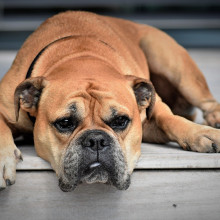
35:33 - Contagious canine cancers
Contagious canine cancers
Elizabeth Murchison, University of Cambridge
Tasmanian devils are one mammal that experiences these transmissible tumours. But another animal, probably one that's even more familiar to you, is one we all know and love, it's our best friend and that's dogs. They're also victims of a contagious cancer. Elizabeth Murchison from the Transmissible Cancers Group at the University of Cambridge told Chris Smith about what this transmissible tumour in dogs is…
Elizabeth - Dog transmissible cancer is quite different to the one Tasmanian devils. It's also spread between animals by the transfer of living cancer cells themselves. But in this case, the cells are spread during mating and this results in genital tumors. It's actually very, very common, although most people in the UK probably haven't heard of it. And that's because it's main reservoir is free roaming, sexually active, uncontrolled dog populations. And as we know, they don't occur in the UK anymore, but actually interestingly, this disease was first described in the scientific literature in the UK 200 years ago in London. So we know it was common here once, but it disappeared in the 20th century due to the control of dogs.
Chris - And what fraction of dogs worldwide have got it?
Elizabeth - It's extraordinary. About 1% of dogs worldwide in places where this is endemic, which is most places, have this disease so it's extraordinarily common. It's quite shocking to think how many dogs have this disease. But it's different to the Tasmania devil cancer in that it is not nearly as deadly. Dogs with this disease, they tend to have localised tumours which remain in the external genitalia. They don't metastasise or spread other parts of the body that frequently. And also the other wonderful thing is that this disease is highly curable with a course of simple chemotherapy. Most of these dogs, almost 100% of them will undergo a complete cure. And we think that that's actually something to do with the immune system rather than to do with the way that chemotherapy drugs act per se.
Chris - Hannah Siddle was telling us about the Tasmanian devils that there's evidence that in each case, because there were two diseases, they've originated from one individual. Is the same true with the dog tumour?
Elizabeth - Exactly. And that's the really fascinating thing about this dog cancer that all the tumors and all these dogs all around the world, they all carry the cells of one individual dog that first gave rise to this cancer. Extraordinarily, we think that that one dog lived about 6,000 years ago. That dog was a dog which got a cancer rather than that cancer dying together with its dog host, as most cancers do, those cancer cells spread to another host and from there that one single cancer lineage has survived for thousands of years and has spread all around the world. It's by far the most prolific and widespread cancer that we know of in nature, it's a really remarkable phenomenon.
Chris - How do you know it's 6,000 years old?
Elizabeth - Well, that's an estimate and it's based on counting mutations in the genome of this cancer. So as cancer cells - or actually indeed any cell - divides, it will accumulate mutations with time. So what we've been able to do is estimate how quickly cells of this dog cancer accumulate mutations. And we've done that by collecting tumours where we know the tumour was spread from one dog to another dog and we know when that happened. So by counting the number of mutations in these short intervals, we've been able to estimate how many mutations occur per unit time, and then by counting the number of mutations back to that original dog and applying this mutation rate, we've been able to come up with this estimate, which does have huge error associated with it. So we think around 6,000 years ago, give or take a few thousand years.
Chris - Why do you think that the Tasmanian devil tumour is a disaster for them, but in dogs as you've pointed out, it's eminently treatable and much more mild as a disease?
Elizabeth - Well, this is an interesting question because it does make you wonder whether thousands of years of evolution have potentially caused this dog cancer to adapt to being a less aggressive cancer. If you think about it, a cancer which comes in and kills its host is going to limit its own possibilities for onward transmission whereas a cancer that comes in and causes a fairly mild disease lives alongside its host for potentially years has many more transmission opportunities. So although we can't time travel back to that original cancer that first arose from that dog several thousand years ago to see whether it was actually more aggressive, it's a really interesting possibility that this cancer may have adapted to being less deadly.
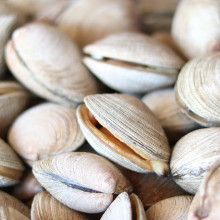
40:25 - Cancer in clams jumps the species barrier
Cancer in clams jumps the species barrier
Rob Ellis, University of Exeter & Alicia Bruzos, Francis Crick Institute
Leaving the world of mammals behind, we are now diving into another instance of these rare contagious cancers. This transfer happens in bivalves like mussels, clams, and cockles. But before we talk about cancers, Rob Ellis, a researcher in Ecophysiology and Sustainable Aquaculture at the University of Exeter, has gone down to his local estuary to “shellebrate” the wonders of these organisms and Alicia Bruzos from the Francis Crick Institute explains to Julia Ravey what is putting this animals at risk…
Rob - I'm out on the estuary in East Devon and in this estuary, bivalves play a critical role for biodiversity. We have a number of different bivalve populations; probably most visibly noticeable are those of the mussels and the oysters. These two species are classed as ecosystem engineers. The two organisms, when they settle, create a natural reef. In doing so, they create a novel habitat that's able to support a range of other species. If we think about a region, for example the Southwest of England, the number of species supported by bivalve reefs can go up by around 750. As well as improving biodiversity, bivalves obviously play a really important role as a food source for things like crabs, starfish and other predators. They are really important in terms of a food source for humans. Around three miles off the coast of east Devon, it's a bit of a cloudy day today so I can't quite see it, but we've got the largest mussel farm in the UK, Offshore Shellfish Ltd. Mussels are readily filter feeding. The population of mussels or a mussel bed can actually improve water clarity, and therefore really benefit adjacent habitats, such as seagrass beds and associated species like that. They can be a really powerful tool that we can employ to therefore improve those coastal environments and reduce human impact. If we were to lose bivalves, this would be a really important problem in terms of impacting coastal biodiversity, impacting coastal function, ecosystem function, and also in terms of impacting our ability to utilize those resources as a source of human food.
Julia - Based on those insights from Rob, losing bivalves would be pretty disastrous, but these animals are also impacted by contagious cancers. These diseases have only recently been found in bivalves, but could have driven past declines in numbers. Alicia Bruzos, cancer researcher at the Francis Crick Institute who studies these rare conditions in bivalves explains...
Alicia - These cancers, which is a leukaemia-like cancer, in bivalves where reported in the late 60's and in the 70's and 80's of last century. But it was not until 2015 when they discovered that they were contagious. Because we needed to analyse the DNA to know that that cancer cell did not originate in that individual and came from a different individual.
Julia - And do we have any idea about how it spreads from one organism to the next?
Alicia - The hypothesis is that somehow the cell is released to the environment. We don't know if it is an active release, or if it is when he's dying passively, the cells are released to the environment. Then the cells float in the sea water and they survive in that sea water, so maybe the temperature and the salinity and all these conditions might have an impact. Finally what these viruses usually do in nature is that they filter water. By filtering water, they take some cancer cells that were floating in the water, and those cancer cells go inside, and then they start to develop.
Julia - Mammals immune systems have evolved in a way to detect things that are foreign and get rid of them. But I'm guessing the immune system of bivalves is quite different to immune systems like ours. Is there a flaw in their immune system that allows this type of contagious cancer?
Alicia - We do know they have defence, but they don't have the same immune system as us. A lot of research has to be done to actually understand why they are not as successful as our immune system to defend themselves from a contagious cancer. There are many parasites that are affecting these kinds of animals; the bivalves. A lot of research is being done to try to understand 'Why is this happening?' 'Why is the immune system of these animals not fighting against all these parasites?' And of course, the contagious cancers.
Julia - You said that these cells appear to float in the water, passing from one organism into the other. How far do we think these cells can travel?
Alicia - Earlier this year, it was published that the same cancer was found in some clams in the Atlantic coast of Spain and also in the Mediterranean coast of Spain. Those two places are located more than 1,000 miles away. How is this possible? Was the cancer cell able to float and travel that far? We are not sure. We also have to consider that maybe human activity played a role in moving that cancer from the Atlantic coast to the Mediterranean coast. But for instance, in mussels, there's another type of contagious cancer that has been found in Chile, South America, North America, Europe, and even in Russia. But in the case of mussels, mussels attach to boats and boats travel long distances. By moving the mussels from one area to another, that is probably how this contagious cancer was arriving to so many places in the world. In the case of the clams, they usually live buried in the sand, so they don't attach to the boats, it's a very interesting question as well.
Julia - And with these cancers, are they restricted to an individual species in the sense of, if a cancer arises in one species, does it stay within that species because they're genetically similar? Or can it jump the species barrier and move into another?
Alicia - For most of them, it is how you describe it. The cancer arrives in an animal and it spreads to other individuals of the same species. But surprisingly, there are several cases in bivalves where the cancer arose in one bivalve species, and nowadays it is found in other species. By reading the DNA, you are able to study the history of that cancer. We found a cancer in the warty venus clam, which is a clam that lives in both the Mediterranean and the Atlantic coast of Spain. By studying the DNA we found out that the cancer cell did not arise in the warty venus clam but arose in a different species, which was called the striped venus clam. Another case of cancer that crossed that species barrier is the mussels. This one is very interesting because it has gone not only from mytilus trossulus, it is also infecting three extra additional species. That is like the master of cancer.
Julia - It seems like we have these cancers that can not only spread from organism to organism, but they can spread potentially from species to maybe different species and then also can potentially travel in some way we don't know and spread from population to population. What would this mean if these types of cancers impacted lots of bivalve populations? What would be the impact of that?
Alicia - We should be very careful with our economic activities when moving animals from one place to another and not only animals. Even with the sea water. We should now think of cancer, like a parasite. In the case of continuous cancer, it does behave as a parasite. And try to track at least these movements, so we don't put the disease into a disease-free area, because imagine that these cancers become very aggressive and they potentially reduce the number of individuals and they drive it to extinction; that will be an ecological problem. But if we keep the disease-free areas disease-free, so no cancer goes into there, at least not by our activities, in a scenario where this happens, that all the population reduces, we can repopulate with the ones that didn't have the disease.
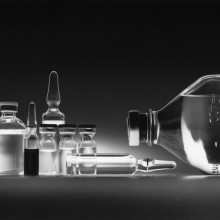
49:32 - Contagious cancer in humans: a medical rarity
Contagious cancer in humans: a medical rarity
Elizabeth Murchison, University of Cambridge
So far, cases of contagious cancers have only been documented in these three animals: tasmanian devils, dogs and certain bivalves. But we can still learn a lot about cancer biology in general from these cases and question whether these could arise elsewhere. Elizabeth Murchison from the University of Cambridge explains to Chris Smith…
Elizabeth - One thing about contagious cancers is that they frequently live much longer than cancers that just arise and remain within a single individual. That means that we can study cancers' long term evolution, and that can tell us how cancers can continue to adapt to their hosts. This can give us insights into the optimal evolutionary roots that cancers can take, but also they can tell us about how cancers can adapt to escape the immune system under fairly extreme circumstances. Though cancers often adapt to escape the immune system, even when they're only non-transmissible cancers, just arising and staying within their host. But these transmissible cancers have to escape what we call an allogeneic immune system; an immune system of a different individual, a foreign graft in essence. Insights into this very extreme setting can tell us more about how cancers escape the immune system, even when they stay in the same host.
Chris - In recent years, we've discovered that cancers also team up with the microbes in the body. In fact, just this week, there was a paper out that looked at the presence of microorganisms inside cancer cells, endowing those cancer cells with additional abilities such as greater resilience, so they can spread around the body better. Has anyone looked at these transmissible tumours and asked if there are bacterial passengers in them that might be aiding and abetting their spread?
Elizabeth - That's a fascinating question. That's something that we are currently looking at, although we don't have anything conclusive to say yet. One thing that is really interesting in the dog cancer however, is that it sometimes takes up little pieces of DNA called mitochondrial DNA from its hosts. As it spreads along, it's sometimes stolen mitochondrial DNA from its host, which helps it to adapt better to being a cancer. This might also be a mechanism which might occur from time to time in human cancers.
Chris - And speaking of human cancers, has this actually happened? I know I reassured people by saying that there's no defined equivalent to these cancers that's spreading among humans all the time at the moment, but are there isolated examples of this happening?
Elizabeth - Yes. There are quite a number of examples of cancers spreading between two people or between small groups of people. These usually occur in 3 different types of settings. First of all, there are accidents, such as surgical accidents for instance. There's one very terrifying case of a surgeon who was operating on a cancer patient and accidentally cut himself on the hand. Several months later he discovered a cancer in his hand at the surgical injury site and it turned out to be the cells of the patient, although he was cured. Then there are organ transplants. When organ transplants are performed, there are very stringent screening processes in place to prevent accidental transfer of cancer cells, but unfortunately this has happened from time to time and cancers have then manifested in the organ recipient. The final case is during pregnancy. This is usually a cancer from a pregnant mother that can spread to the foetus. This is extraordinarily rare and usually involves leukaemia or lymphoma. These are all extremely tragic and sad, rare cases, but they can happen from time to time.
Chris - I wanted to touch on that point you raised about pregnancy because of course that is the body tolerating the invasive growth of tissue, which is genetically incompatible to it. The baby is genetically different from mum. So is there evidence that these transmissible cancers in the animals that get them are actually exploiting that mechanism that is a necessity of the way we reproduce?
Elizabeth - It could well be that transmissible cancers are making use of some of the adaptations that are there in our cells, which allow pregnancy to occur. Which as you said, is a circumstance when two genetically distinct cell types coexist within the same body. There is some preliminary evidence suggesting that that could well be the case that some of these pregnancy mechanisms are being used.

55:21 - QotW: Why do electric car batteries wear out?
QotW: Why do electric car batteries wear out?
Dr Chloe Coates from the University of Cambridge spoke to Evelyna Wang about the answers to this battery brain baffler...
Evelyna - The batteries that power your electric car are lithium ion batteries. How you use that car and its battery has an impact on its lifetime. Dr. Chloe Coates from the University of Cambridge is here to drive us to the bottom of this:
Chloe - For a consumer, let’s say an electric vehicle driver, there are 3 main considerations that impact battery degradation. These are the temperature of the system, state of charge (fully charged/discharged/in between), and the usage profile (how fast/slow charge/discharge).
Evelyna - When discharging a LiB, Li ions move from the negative graphite electrode to the positive cathode - which produces electrical energy we can use to power a car. And on charge, the Li ions are moved the opposite direction.
Chloe - On charge and discharge, both electrodes undergo large volume changes as the lithium is inserted or removed. This can cause stress on the particles and lead to cracking which exposes more surface area and loss of active material. (1:58) The graphite anodes are also affected by Li plating. At low temperatures or at fast rates, the Li can’t intercalate into the graphite layers fast enough so Li metal accumulates at the surface. (2:25) In extreme cases, the Li plates unevenly and forms dendrites which can short circuit the cell.
Evelyna - Another component of the LIBs is the liquid electrolyte, which conducts the Li ions in between the graphite to the cathode…
Chloe - The molecules that make up the electrolyte can decompose at high voltages on cycling or on reaction with trace water in the system, and can in turn react with the surfaces of the particles. This can cause surface layers that can increase the resistance in a battery. (2:38) The degradation mechanisms described here are only a sample of degradation that can occur in a battery. The interplay between the mechanisms and the order in which they occur remains an important question…
Evelyna - So how do we improve on this?
Chloe - In most cases, moderation is key. (0:38) Perhaps more unexpectedly, more degradation happens at high states of charge or discharge. So ideally, you would want your car to charge extremely slowly and keep it at about 50% charged. But this isn’t practical when driving long distances and charging often… (2:57) Since we can’t wait 10 years to study the battery degradation in a car under typical usage, we instead mimic failure modes in the lab..and look at specific parts of the battery to try and understand what is happening.
Evelyna - So what’s next in battery technology? Research into the specific conditions and reactions that cause degradation will continue to help improve current LIB technology. Industry research is also focused on increasing safety or decreasing cost, such as the recently discussed LFP systems (although these chemistries would decrease how far you can drive your electric car). There is also ongoing research into solid electrolytes or moving beyond Li ions, however many of them need further study.
Related Content
- Previous Sex
- Next Why do electric car batteries wear out?










Comments
Add a comment